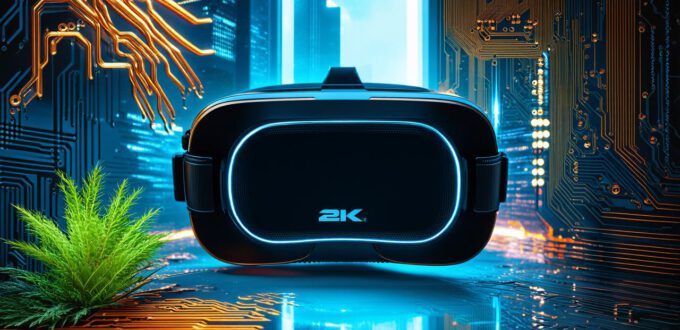How to Develop a Virtual Reality App Efficiently: A Comprehensive Guide for App Developers
Virtual reality (VR) technology is rapidly evolving and gaining popularity in various industries. As a result, app developers are increasingly looking for ways to create immersive VR experiences that engage users and provide value. However, developing a VR app can be a challenging task, especially if you lack experience or knowledge in this field.
In this article, we will provide a comprehensive guide on how to develop a virtual reality app efficiently. We will cover the essential steps involved in creating a VR app, including defining your target audience, selecting the right technology stack, designing an immersive user interface, and optimizing your app for performance.
Defining Your Target Audience
Before you start developing a VR app, it’s essential to define your target audience. This includes understanding their needs, preferences, and behaviors when interacting with VR technology. Some key factors to consider include:
- Age range: Different age groups may have varying levels of comfort with VR technology and different expectations for what they want from a VR experience.
- Gender: While gender is not the only factor to consider, it can play a role in the type of content and features that your app should include.
- Interests: What are your target users passionate about? This could be anything from gaming to education or healthcare. Understanding your audience’s interests can help you create content that resonates with them and drives engagement.
- Use case: What problem is your VR app solving for your target audience? This could be anything from improving productivity to reducing stress or enhancing training and development. By defining the use case for your app, you can ensure that it meets a real need and provides value to your users.
Selecting the Right Technology Stack
The technology stack used to develop a VR app plays a crucial role in determining its performance, scalability, and maintainability. Some of the key factors to consider when selecting a technology stack include:
- Development platform: There are various platforms available for developing VR apps, including Unity, Unreal Engine, and A-Frame. Each platform has its strengths and weaknesses, so it’s essential to choose one that meets your needs and budget.
Designing an Immersive User Interface
The user interface (UI) of a VR app is critical in creating an immersive and engaging experience for users. Some key factors to consider when designing a VR UI include:
- Hand tracking: In VR, hand gestures are used to interact with the virtual environment. It’s essential to design your UI to account for this mode of interaction, such as using intuitive gestures that make sense in the context of the app.
Optimizing Your App for Performance
Performance optimization is crucial for ensuring a smooth and seamless user experience in VR apps. Some key factors to consider when optimizing your app include:
- Frame rate: A high frame rate is essential for creating an immersive VR experience. It’s important to ensure that your app can maintain a stable frame rate, especially when running on lower-end hardware.
Case Studies and Expert Opinions
Here are some real-life examples of successful VR app development that can provide insights into best practices and strategies for creating effective VR apps:
- AAA Video Games: Many of the most popular video games in the world today were developed using virtual reality technology. Developers such as Oculus, Valve, and Sony have successfully created immersive gaming experiences that engage users and drive revenue. Their success can be attributed to their deep understanding of VR technology, their ability to create engaging content, and their commitment to optimization.
FAQs
Here are some frequently asked questions about developing a VR app:
1. What software do I need to develop a VR app? There are various software options available for developing VR apps, including Unity, Unreal Engine, and A-Frame. Each platform has its strengths and weaknesses, so it’s essential to choose one that meets your needs and budget.
2. Can I create a VR app on my own? Yes, it is possible to create a VR app on your own, but it requires significant technical expertise in programming, 3D modeling, and game design. Alternatively, you can hire a team of experienced developers to help you with the process.
3. What hardware do I need to run a VR app? The hardware requirements for running a VR app depend on the complexity of the app and the target platform. However, most VR apps require a high-performance computer or console with dedicated graphics processing power.
4. How long does it take to develop a VR app? The time required to develop a VR app can vary significantly depending on the scope and complexity of the project. A small, simple app may take only a few months to complete, while a complex enterprise-level app could take several years.
5. Can I monetize my VR app? Yes, there are various ways to monetize a VR app, including selling it directly to consumers, offering in-app purchases, or providing subscription services. It’s essential to develop a clear monetization strategy before starting the development process.
